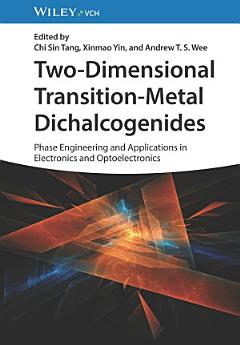Two-Dimensional Transition-Metal Dichalcogenides: Phase Engineering and Applications in Electronics and Optoelectronics
Über dieses E-Book
Comprehensive resource covering rapid scientific and technological development of polymorphic two-dimensional transition-metal dichalcogenides (2D-TMDs) over a range of disciplines and applications
Two-Dimensional Transition-Metal Dichalcogenides: Phase Engineering and Applications in Electronics and Optoelectronics provides a discussion on the history of phase engineering in 2D-TMDs as well as an in-depth treatment on the structural and electronic properties of 2D-TMDs in their respective polymorphic structures. The text addresses different forms of in-situ synthesis, phase transformation, and characterization methods for 2D-TMD materials and provides a comprehensive treatment of both the theoretical and experimental studies that have been conducted on 2D-TMDs in their respective phases.
Two-Dimensional Transition-Metal Dichalcogenides includes further information on:
- Thermoelectric, fundamental spin-orbit structures, Weyl semi-metallic, and superconductive and related ferromagnetic properties that 2D-TMD materials possess
- Existing and prospective applications of 2D-TMDs in the field of electronics and optoelectronics as well as clean energy, catalysis, and memristors
- Magnetism and spin structures of polymorphic 2D-TMDs and further considerations on the challenges confronting the utilization of TMD-based systems
- Recent progress of mechanical exfoliation and the application in the study of 2D materials and other modern opportunities for progress in the field
Two-Dimensional Transition-Metal Dichalcogenides provides in-depth review introducing the electronic properties of two-dimensional transition-metal dichalcogenides with updates to the phase engineering transition strategies and a diverse range of arising applications, making it an essential resource for scientists, chemists, physicists, and engineers across a wide range of disciplines.
Autoren-Profil
Chi Sin Tang, PhD, is currently Research Fellow at the Singapore Synchrotron Light Source, National University of Singapore (NUS) under the NUS Emerging Scientist Fellowship.
Xinmao Yin is Professor at the Physics Department of Shanghai University, China.
Andrew T. S. Wee is a class of '62 Professor of Physics at the National University of Singapore.




